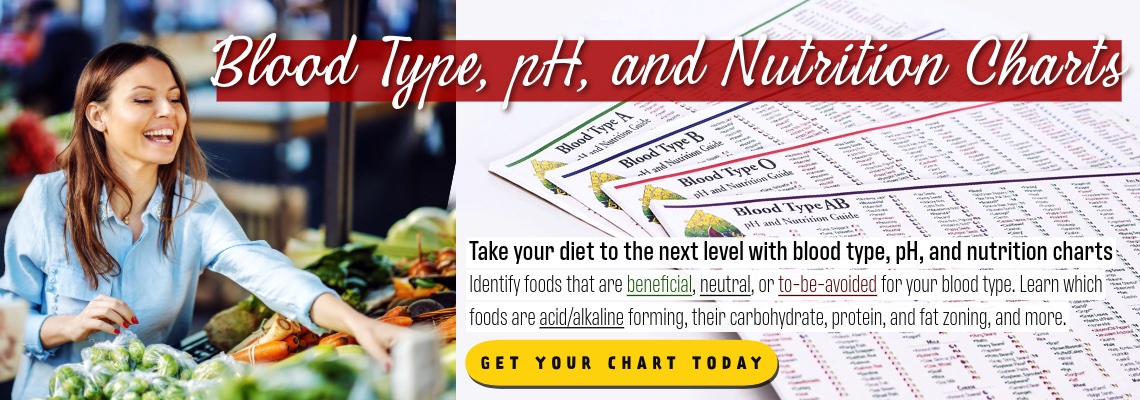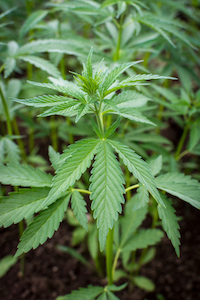
This article is from the first chapter of the book I'm writing covering my insights on CBD, Medical Marijuana and the Endocannabinoid System. It details how I got interested in this topic and my experience with marijuana for medicinal purposes
With the growing number of products containing hemp and the popularity of products with CBD or other cannabinoids, it’s time to share my own knowledge and thoughts on the subject.
It’s important to note that this is a new field of research and science is learning more all the time, so we don’t have a complete understanding of what hemp and cannabinoids like CBD do. So it is important to keep learning. But, just because we don't fully understand how an herb works we can still use it derive benefit from it.
I’m not someone you would expect to promote the use of cannabis (marijuana/hemp) for health purposes. I grew up in a religion that
forbade the use of drugs, alcohol, tobacco, coffee and even black or green tea.
My family went one step further. We weren’t even allowed to drink caffeinated
soda. I strictly adhered to these prohibitions for the greater part of my life
For example, I first tasted Coca Cola when I was 19 and I didn’t try it again until I was 32 years old. And then I only drank it because I was touring mainland China and my choice of beverages was limited to alcohol, coffee, tea or Coca Cola. I picked it as the lesser of the “evils.”
Eventually, I decided to try more of these forbidden substances. In my 40s I tasted wine and I tried coffee for the first time. So, it may seem surprising that I tried I tried cannabis as a medicine when I was only 38 and became convinced that the plant had legitimate medical uses.
My Introduction to Cannabis
As an herbalist, I have long believed that the Creator placed medicinal plants all over the world to help mankind overcome the illnesses we face. I successfully used herbs and dietary changes to overcome the chronic health problems of my youth. Later, I used herbs and other natural techniques to help my children recover rapidly from colds, flu, earaches, sore throats, and headaches, often within a few hours. I had also helped many people suffering from various chronic ailments, including my parents, to experience better health.
My belief in the value of medicinal plants led me to read The Emperor Wears No Clothes. This book, first published in 1985, is about one of the most interesting, and potentially useful plants on the planet—cannabis.
Cannabis is the Genus name for Cannabis sativa, the plant known primarily as marijuana or hemp. It’s a very unusual plant. Most flowering plants have both the male and female reproductive parts in the same flower. Some flowering plants have male and female flowers on the same plant. Cannabis, however, has male plants and female plants, as well as some plants that have both male and female flowers on the same plant.
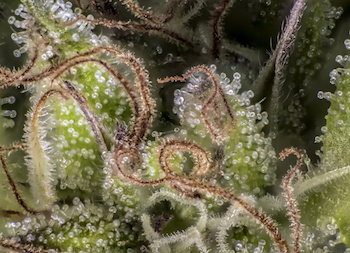 Botanists used to recognize three species of cannabis, but
now recognize there is only one species, Cannabis
sativa, with many sub-varieties. Cannabis
sativa var. sativa has a gene the
produces a lot of fiber, so it’s been commercially grown for that purpose. It’s
the variety that is commonly called hemp.
Botanists used to recognize three species of cannabis, but
now recognize there is only one species, Cannabis
sativa, with many sub-varieties. Cannabis
sativa var. sativa has a gene the
produces a lot of fiber, so it’s been commercially grown for that purpose. It’s
the variety that is commonly called hemp.
Cannabis sativa var. indica has different genetics. It produces less fiber and more resin. The resin contains biologically active constituents including phytocannabinoids, terpenes, and flavonoids. It’s the variety that people use recreationally and is commonly known by the name marijuana, but it also goes by many other names.
The Incredible Value of Hemp
When I read The Emperor Wears No Clothes, I learned a great deal about the form of cannabis known as hemp. Hemp has been a valuable industrial resource for the whole of Western civilization. Hemp fibers have been used to make paper, clothing, rope, and sails. In fact, the word canvas probably derived from the Greek word, kannabis, which means two reeds or two sexes.1
It’s interesting to note that until 1883, 75-90% of all paper was made from hemp fiber, including Bible’s, maps, books, newspapers and even paper money. In fact, the first draft of the Declaration of Independence was written on hemp paper and then later transferred to parchment. Early American clothing was often made from hemp and old cloth was gathered to be recycled as paper, hence the term rag paper2.
Hemp is amazing, but unfortunately, when the Federal government banned marijuana, it also banned the cultivation of hemp. Fortunately, that decision was recently reversed. In December of 2018, a new farm bill was passed and signed into law that permitted the cultivation of hemp in the United States under certain legal restrictions. The biggest one is that THC, the primary psychoactive compound, content has to be less than 0.3 percent.
It’s an important move forward because hemp is incredibly useful and environmentally sustainable as a farm crop.
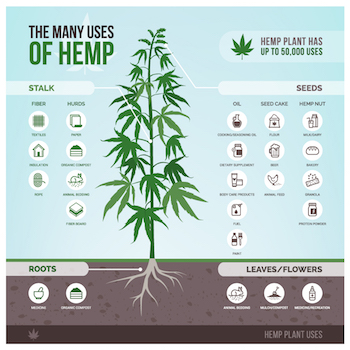 Hemp could literally save our forests. A 1916 USDA Bulletin
reported that one acre of hemp could produce as much paper as 4.1 acres of
trees over a twenty-year period. Hemp paper is stronger, uses fewer chemicals in
manufacturing and is easier to recycle than wood-pulp paper.
Hemp could literally save our forests. A 1916 USDA Bulletin
reported that one acre of hemp could produce as much paper as 4.1 acres of
trees over a twenty-year period. Hemp paper is stronger, uses fewer chemicals in
manufacturing and is easier to recycle than wood-pulp paper.
Most rope was made from hemp until 1937 when it was replaced by synthetic fibers derived from petrochemicals.
Hemp seeds are also highly nutritious. Hemp seed is rich in omega-3 fatty acids and high in protein. In fact, hemp and flax seeds are the best sources of omega-3 and omega-6 essential fatty acids in the plant kingdom. Hemp-based protein powders are also becoming increasingly popular.
Like flaxseed oil, which is also known as linseed oil, hemp seed oil can be used to make paints and varnishes. Because the plant grows so rapidly, without severely depleting the soil, it also makes a great source of biomass for fuel. And, these are just some of the main uses of this plant.
Cannabis has potential in herbal medicine, because it contains compounds called cannabinoids, such as CBD. Since the hemp cultivars don't contain as many cannabinoids as marijuana cultivars, hemp doesn’t have as strong of a medicinal value in general. However, there are cultivars with low enough THC and high enough levels of cannabinoids to be useful in healing.
Because of this, many companies are making hemp and CBD products for health purposes. As an herbalist, I know there is great healing potential here. Let me explain how I know.
Early Experiences with Cannabis
After reading The Emperor Wears No Clothes in the late 1980s, I was convinced of the industrial and medicinal value of cannabis. That’s rather remarkable considering the ultra-conservative views I had about substance abuse. Nevertheless, it opened me up to being willing to give it a try shortly thereafter.
I was on the road to do a class on herbs and natural healing and staying at the home of some people I’d become friends with who used marijuana recreationally. While I was staying there, I got an earache. It was extremely painful and my friend, who knew that I was aware of the medicinal use of marijuana, suggested I take a puff on a joint, telling me it would relieve the pain.
I declined at first, but I did allow him to blow some of the smoke into my ear, which interestingly enough, caused the pain to diminish after a few seconds. After that he encouraged me to take one puff into my mouth, but not into my lungs, saying it wouldn’t make me high but it would relieve the pain. I finally accepted, took a little of the smoke into my mouth and blew it back out quickly, to make sure I didn't accidentally inhale.
The pain in my ear was gone in less than one minute, and more remarkably, it didn’t come back. I was quite impressed, to say the least.
My friend had learned how to make glycerin-based herbal extracts using a special three-step process I had developed with another herbalist called the TincTract method. He decided to make a TincTract of cannabis leaf. My friend called the TincTract of cannabis, “E,” which was short for Emperor, based on the title of the book.
The Emperor
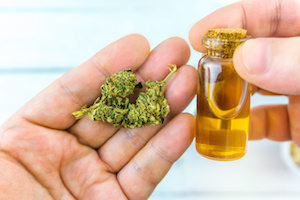
My friend gave me a few bottles of E to try. It was a fantastic pain reliever. It worked better than any herb I’d ever tried for pain, and even better than many over-the-counter and prescription pain medications.
On two occasions, I had different friends call me because they were in incredible pain. Both had just taken strong, prescription pain medications that hadn’t helped. I brought them a bottle of E and told them, "Don’t ask me what it is, just take some." One dose of about ½ teaspoon and they were both out of pain within five minutes.
I used E with family and friends as my secret medicine for severe pain, headaches, backaches, and joint pains. I seldom gave people more than one dose, using it in combination with other herbs and remedies to remove the underlying cause of the problem.
I finally gave up after about eight years of safely and successfully utilizing E after my second divorce. I was worried that my ex would try to get me arrested so I decided it wasn’t safe to have around anymore and I got rid of it.
Nevertheless, I continued to read and educate myself about the uses of cannabis for medical purposes. I attended some workshops on it at herb conferences and I’ve sometimes recommended it for clients in severe pain if they could safely obtain it.
My Thoughts on the Recreational Use of Marijuana
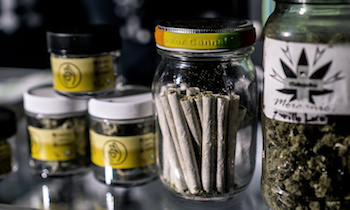 I've tried smoking marijuana recreationally twice. The
first time was in the early 1990s when I was visiting with my friend who made
the Emperor TincTract. Having taken the
liquid, I was curious about what the effects of smoking pot actually were. So,
I decided to try it as what I intended to be a one time experiment.
I've tried smoking marijuana recreationally twice. The
first time was in the early 1990s when I was visiting with my friend who made
the Emperor TincTract. Having taken the
liquid, I was curious about what the effects of smoking pot actually were. So,
I decided to try it as what I intended to be a one time experiment.
The joint got passed around and after I had taken two puffs I asked, “When do we get high?”
They laughed and told me I was already high.
“Really?” I questioned. “I just feel very relaxed.”
“That’s it,” they told me.
After one more puff, I thought, I can make myself feel like this without having to rely on smoking something that’s illegal. The truth was that I didn’t feel any different than I did when I had a good massage, or went into a deep meditative state, or otherwise had an experience that was physically relaxing and enjoyable.
In trying to figure out how marijuana makes a person high, researchers have discovered a whole system of receptors that are affected by cannabinoids. These compounds are found in high levels in various strains of cannabis and they've also been found in other plants. And endocannabinoids (internal cannabinoids) are naturally made in the body.
Understanding this, it’s now clear to me why I didn't feel the need to smoke. I already knew how to do many things that activated my own endocannabinoid system so I new could feel good without the cannabis. This is an important idea, because it doesn’t just apply to cannabis, it applies to all substances we use to help us feel good when we’re suffering or struggling.
I did try smoking pot one more time when I was struggling. It was about 10 years later and I was just emerging from a period of stress and emotional difficulty. I was living alone and the weight of my divorces, a recent romantic breakup and a bankruptcy were weighing heavily on me.
After a couple of puffs, all the emotional pain inside of me started welling to the surface. I didn’t feel good, I just wanted to cry and express the pain I had been dealing with. It was probably a cathartic experience, but it also confirmed to me a fact I already believed, trying to use anything, alcohol, pot, drugs or even medications to escape your emotional struggles doesn’t work. As the title of Carol Truman’s book suggests, Feelings Buried Alive Never Die.
I’m no longer the purist that I was when I was young. I've experienced enough that I can understand why people use addictive substances to numb their pain and suffering. I’ve tried drinking and I’ve tried pot and have experienced what they have to offer. And I believe that there isn't anything inherently wrong with moderate use of alcohol, marijuana or other substances. But, I do want to address the idea that using any substances to escape from the difficulties of life is not a proper use of anything.
Looking to the Future
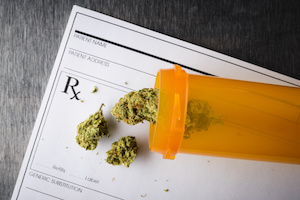 I strongly believe that cannabis can be used as a powerful healing herb and as a useful industrial product. That’s why I’m glad that it’s
now legal to grow hemp in the United States. Many states have also legalized
the use of marijuana for medical purposes, and some even for recreational
purposes. I think these are positive steps forward and I'll be interested to see where the clash between Federal and State regulators over the
issue will end. Personally, I think it’s about time. The danger of using cannabis is on par with the danger of drinking alcohol and the prohibition of both
turned otherwise law-abiding citizens into criminals.
I strongly believe that cannabis can be used as a powerful healing herb and as a useful industrial product. That’s why I’m glad that it’s
now legal to grow hemp in the United States. Many states have also legalized
the use of marijuana for medical purposes, and some even for recreational
purposes. I think these are positive steps forward and I'll be interested to see where the clash between Federal and State regulators over the
issue will end. Personally, I think it’s about time. The danger of using cannabis is on par with the danger of drinking alcohol and the prohibition of both
turned otherwise law-abiding citizens into criminals.
The legal landscape isn’t settled and researchers are still busy understanding cannabinoids and how they can be obtained and used. Different companies are experimenting with different varieties of cannabis to see what they can do. We still don't understand what we can and cannot do both legally and therapeutically so, we need to be cautious about what claims we make with these products, as making wild and exaggerated claims typically brings government regulation slamming down on the industry.
Nonetheless, we do know enough to start using hemp as a natural medicine. The legal climate is open enough that if we do so reasonably, we’ll be able to help people without worrying about getting arrested.
If you've enjoyed this article make sure that you're subscribed to my newsletter so you'll be notified when the next article is posted.
Endnotes
1 The Emperor Wears No Clothes by Jack Herer (Austin, TX: AH HA Publishing, 2010), pg. 29
2
Ibid, pg 31
Steven's Articles
-

-
The Evidence for Berberine
A yellow alkaloid found in traditional infection-fighting…
-

-
The Sensible Use of Caffeinated Herbs
Kola nuts, guarana, and yerba mate and other herbs…
-

-
The Health Benefits and Problems with Coffee
This popular caffeinated beverage can be beneficial…
October
-

-
Understanding Caffeine & Cellular Adaptation
Preserving the power of caffeine's buzz and the…
September
-

-
Horseradish
A pungent spice for aiding protein metabolism…
-

-
Banaba or Crepe Myrtle
A beautiful tree from Southeast Asia whose leaves…
August
-

-
Monkeyflowers
Flower essences to help see ourselves more clearly…
-

-
Mariposa Lilies
Strengthening the bond between mother and child…
-

-
The Noble Bay Leaf
A common kitchen herb for aiding digestion and…
-

-
Epimedium: Horny Goat Weed
A circulatory stimulant and kidney yang tonic…
July
-

-
The Medicinal and Nutritional Benefits of Apricots
A nutritious fruit and valuable medicinal seed for coughs
-

-
Dogwoods
Asian dogwood is used to stop excessive discharge,…
June
-

-
Neem: The Village Pharmacy
A popular Ayurvedic remedy for dental and immune…
-

-
Spilanthes: The Toothache Plant
A traditional remedy for teeth and gums, as well…
-

-
Forsythia
An anti-inflammatory, fever-reducing, and infection fighting herb

